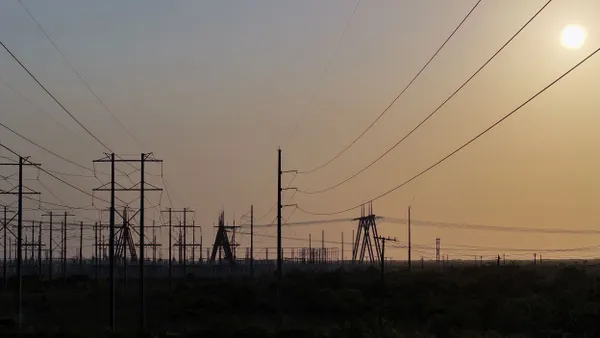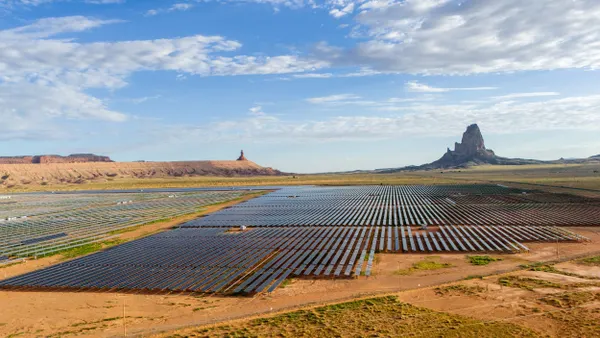Dive Brief:
-
The U.S. Environmental Protection Agency on Monday finalized a rule that changes regulations on how power plants manage coal ash and wastewater disposal.
-
EPA's rule follows a 2017 request from the Utility Water Act Group (UWAG), which represents a large coalition of U.S. utilities, to alter the 2015 rule set by the Obama Administration. EPA estimates the rule will save the power industry approximately $140 million annually.
-
Critics of the rule say the change will allow coal plants in the U.S. to pollute more freely by weakening the technology requirements utilities use to control waste streams and limit pollution to nearby waterways.
Dive Insight:
Monday's rulemaking is the latest move by the Trump Administration to respond to industry grievances with Obama-era EPA rules.
The 2015 rule set limits on the levels of coal ash that can be released from power plants — 12% of electric power plants were expected to incur some costs under the rule, according to EPA.
Compliance costs associated with the 2015 rule were estimated at $480 million per year, while environmental and health benefits were estimated at $451 million to $566 million. Several groups challenged the rule, and in 2017 UWAG filed a petition for administrative reconsideration of the final rule, saying in its 110-page letter to the EPA that the rule "grossly underestimated" the costs of compliance, and would lead to coal plant closures.
Then-EPA Administrator Scott Pruitt "decided that it is appropriate and in the public interest to conduct a rulemaking to potentially revise the new, more stringent" coal ash and wastewater rules, in a letter addressed to the petitioners.
UWAG represents 163 individual energy companies and three national trade associations: Edison Electric Institute, American Public Power Association and the National Rural Electric Cooperative Association.
"The cumulative cost of all of those rules affecting the utility and coal industries is staggering," UWAG wrote, referring to the 2015 rule and "other contemporaneous major rulemakings affecting these industries" set in place by the Obama-era EPA.
Utilities praised the rule change from EPA.
"The revisions provide environmental protections in a technologically and economically achievable manner, which is critical to EEI member companies' ability to continue providing reliable, affordable, and clean energy to U.S. homes and businesses," EEI Vice President for Environment, Natural Resources, and Occupational Safety & Health Quin Shea said in a statement.
EPA says the rule would reduce coal ash pollution by nearly 1 million pounds annually more than the 2015 rule, which was supposed to have reduced toxic metal, nutrient and other pollutant discharges by 1.4 billion pounds annually.
"Newer, more affordable pollution control technologies and flexibility on the regulation's phase-in will reduce pollution and save jobs at the same time," EPA Administrator Andrew Wheeler said in a statement.
But critics of the new rule say EPA's accounting measures are fundamentally flawed and will lead to higher levels of coal ash pollutants.
"[T]his new rule weakens the overall standards, inserts loopholes that would allow a number of plants to avoid them altogether, and gives plants more time to keep polluting before they have to comply with the standards," Thomas Cmar, deputy managing attorney of the Earthjustice Coal Program, said in an email. EPA's accounting measures assume a large number of plants will voluntarily install more effective technologies under the rule. But the highest polluting plants are unlikely to follow these rules if there are loopholes available, he said.
"EPA is supposed to be requiring under this rule that power plants across the board use the best available technologies to eliminate their pollution. Instead of doing that here, EPA is creating a framework that will allow the worst-performing plants to take advantage of the weaker provisions to continue dumping into their local waterways," said Cmar. Earthjustice is planning to challenge the rule.














